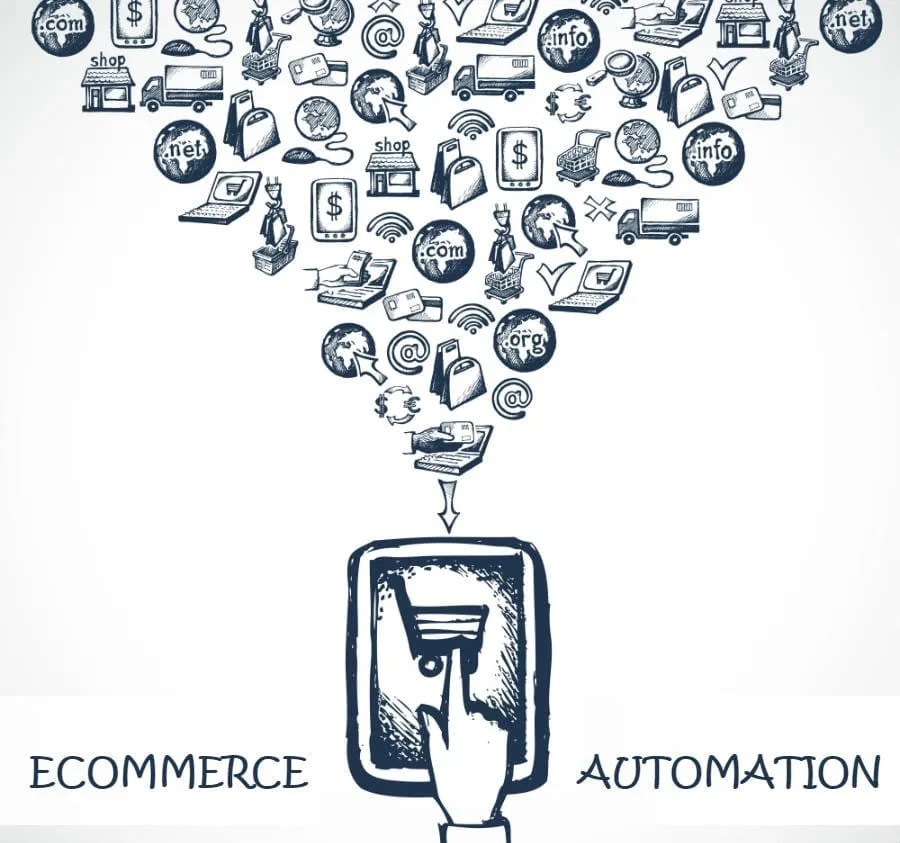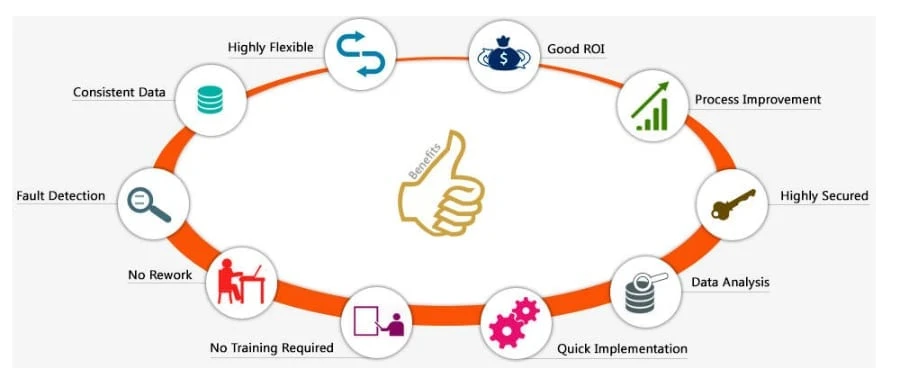Marketing Automation in Ecommerce: How Much Is Too Much?

You’ve seen countless guides telling you to “automate now!” because your E-commerce business won’t last unless you do. What they don’t tell you is that automation, especially when there’s too much, can cause your customers to head for the digital door.
We’re not anti-automation in the slightest; it can make running any eCommerce shop significantly easier, especially in the realm of your shipping and order management. But, we’re honest enough to admit that there can be too much.
So, what’s a business owner like you to do? Automate everything now and then see what you don’t like? Automate in small doses and run the risk of falling behind?
There’s no single answer for everyone, but there is a great reason to approach automation like anything else: “Everything in moderation, including moderation.” Let’s dive deeper into what Mr. Wilde’s thoughts can mean from an E-commerce perspective.
Quick Definition: Ecommerce Automation
The discussion needs to start with getting everyone on the same page. E-commerce automation, for our chat at least, is when you use software or systems to automate a variety of interactions or activities for your Ecommerce store.
This can include how your shopping cart behaves or how your website makes offers to people as well as the automation of internal processes like creating purchase orders and shipping orders, generating reports each week, or sending alerts to your IT team when an order seems like a risk or fraud.
People tend to automate E-commerce activities for a few main goals:
- Reduce human activities such as data entry, aiming to reduce human error and manual workload.
- Simplify the processes used to run your business, often automating both the flow of data and how it is used at an endpoint.
- Syncing up your software so that things feel like a single platform, even though you’ve got a lot of different systems running. So, a successful sale triggers the different software to create a warehouse order, create a new customer profile, and email a receipt to your customer.
Automation can look and act very differently. These activities can vary significantly across organizations even if they’re trying to achieve the end result. That means there’s never going to be a complete list of how to best use automation that’s perfect for you.
What it does give us, however, is a set of principles we can use to guide the use of automation. Thankfully, we can keep things simple.
Ask Yourself: Am I Helpful?
Here’s the complex part: every automation you employ should be beneficial to someone. It sounds straightforward, but it can be a difficult rule to live by for your business. The problem is that many things that seem helpful may cause more harm than good.
Email is one of the big tools to get automated because it can save you a lot of time and reach out to customers, or potential customers, with offers and help and so much more. It’s amazing! Until it all breaks.

What if you’ve automated your system and are sending emails that aren’t helpful. Coupons don’t match what people buy; you’re promoting products that are sold out, it’s a snarky tone that worked two years ago but now makes your average customer annoyed.
Or maybe it’s asking for a lot of personal information and, in the wake of the recent Facebook news, that scares people off. This is a contextual area where you must ask if it’s helpful for your business.
Some areas are more direct. Let’s say you automate your warehouse with a new order management tool. The picking orders it generates aren’t designed for your small warehouse tools, so they leave off any items after line number 12. So, your team now must manually check large orders to see if something is missing.
Incorrect orders harm your profitability, reputation, and customer service. Your managers are unhappy with that and get angry at the warehouse team for mistakes. At the end of the day, there’s a 50-50 chance that your team will completely stop using this system because of that aggravation. You’ve just spent a lot of money only to hurt your business.
One final example to leave you with is an automated tool that pops up some of your products with a size chart. It’ll help your customers make sure they buy the right size and limit returns. You are helpful. Now, if they look at 12 different shirts and get the pop-up 12 times, are you still being helpful, or have you moved into the “annoyance” space?
The Two Rules of Automation
There are thousands of things your business does every day that could be great to automate. Or, it could be terrible and end up breaking a workflow and grinding your business to a start. How do you keep from doing the latter?
Related Article: E-Commerce Security: 7 Ways To Protect E-Commerce Customer Data
We apply two rules to any potential automation. The first involves a discussion and thought before you even start toying with the software. The second rule is there to review changes you make now and in the future. The important note is that these two are perpetual rules — you want to keep coming back to them and applying them.

Have People Review Everything
The good news about our second rule is that it is involved with Rule 1. As you determine what is or isn’t helpful, have teams or reviewers come in and act out every step in the process. Someone is a customer who does buy, while another doesn’t; warehouse teams fill orders using various systems; certain people get offers while others don’t; and so-on. It’s A/B testing that you probably know already.
Review everything before implementation to see if it is helpful.
Review everything again before it goes live to see if it is correct. Start with proofreading. Typos are a great way to have people misunderstand what you’re offering or to have to backtrack on a sale you didn’t mean to create. You don’t want a 5%-off sale to become a 50%-off sale because no one took a second look.
You’ll also want to review your data — the good news is that you can use some automation tools here! We suggest starting with form fields for your sign-ups. No one wants to be greeted by an expletive that they used in the “Name” field when frustrated by a sign-up.
Also in the data space, make sure you’re reviewing the information when you consolidate it and remove duplicates. If you leave them in, some people may get multiple emails, and that’s one of the biggest reasons people unsubscribe and walk away from a brand.
Related Article: 12 ECommerce Trends That You Must Know To Dominate In 2018
One final issue we’ve seen in rare circumstances is that systems try to segment based on data you don’t have, and you won’t catch it unless you review it. Let’s say your new email automation tool gives you an option to sort by gender. That’s great for personalized ads! But your database doesn’t specify, and the email platform just assigns everyone to “male” by default if the information is unavailable.
You’ve just sent the wrong targeted info to some of your audience, and that weird feeling you created could lead to many unsubscribes and lost customers.
Where Does Automation Shine?
Here’s what you really came for: the list of when marketing automation makes sense! There are a lot of great tools available for each section and segment, many of which can work together. We don’t get into specific suggestions beyond the area of application.
Here are the eight chief areas where marketing automation can work for you:
- Cart abandonment: More than two-thirds of all online carts are abandoned. You can fight this with follow-up emails that remind people about purchases or even offer coupons. The great news is that many eCommerce development platforms offer this functionality.What to look for here is how narrowly you can adjust who gets what message. One side note: people tend to start reporting your email as spam after the second or third email about the same abandoned cart.
- Social media: There are plenty of amazing tools out there to automate social posts and even generate some custom responses, such as when someone tweets to your support team. What to look for in the eCommerce space are specific product-integration tools.Some may give your customers pre-made options to share after a purchase, can broadcast messages whenever you make a big sale, or may even be able to share across all channels the moment you add a new product to your store.
- Dynamic pricing: Here is a biggie that people love but makes Rule 2 even more important. Dynamic pricing tools will adjust your prices at checkout or selection based on a variety of things, including what’s in the cart, shipping location, and when they buy.It’s great for testing prices and coupons, but left unchecked could do major harm to your revenue.
- Loyalty coupons and upgrades: Sometimes it is annoying to sign in to a location for the 20th time so people may skip it — and you lose important data.Automation tools not only remember people based on browser and information, but they can also remind customers of available coupons or automatically apply savings at checkout. This is a terrific way to add another benefit for customers to sign in; it’s a trade most are willing to make.
- Refund and return management: Many leading E-commerce platforms and shopping carts now include an option to start the return and refund process. This automation is great because it can clearly provide customers with your policy and get wheels in motion before any human needs to get involved.A smart ordering system can also track the entire return process and automate confirmations for when items are received and accepted, as well as when refunds are credited.
- Company accounting: You probably don’t think of your accounting software as an automation tool, but it is exactly that. You’re able to track orders and expenses, with the system automatically tagging items in all categories so you can sort and get a snapshot of your business’s health.New tools can also create digital receipts for your orders as well as customers, greatly reducing manual tasks. Again, always review these items.

- Customer chats: We’re in the age of the chatbot. Almost every site we visit has the little bubble pop up with a question or to offer support. The good news is that many of these now include automated options, where the bot can provide general answers based on your FAQ and site knowledge.These answer many common customer questions and keep the process quickly without having to involve email. Look for tools that can back chatbots with live tech support if you have a complex store, products, or the average sale is high enough to justify the cost.
- Email: Email marketing is likely the biggest area of automation for today’s digital businesses. There are countless templates, offers, and more you can send out, with just as many programs to handle it all. The good news is that people still like email and its how they want to communicate with companies.It is great for welcoming people, reaching out about carts, asking for reviews, sharing coupons, and much more. It’s an effortless way to stay in touch, but too much email automation can also overwhelm your audience.
With all of that said, here’s one more takeaway about automation: customer interactions demand balance. You need to come off as a person and not overwhelm, but you also want to be helpful and touch base.
Go back to our two rules and see if the automation you’ve chosen is helping your business and your customers, and then check to ensure it doesn’t get annoying. Help people buy from you, don’t create the digital equivalent of following them around the store and asking if they need help every five seconds.
And Don’t Forget the Warehouse
Our focus for E-commerce automation lives in the warehouse, where there is plenty to automate and improve speed and accuracy. Using fully automated end-to-end order fulfillment can help you promise customers that they’ll get orders quickly and be accurate the first time.
Even if you outsource, there are tools to think about and consider. We offer eCommerce fulfillment services for companies of all sizes and have worked to specifically interact and integrate with different shopping carts and eCommerce platforms. When our customers use the same partners, the entire process is easier to manage and audit, including how businesses like yours can review our success rate and quality.
Depending on your size and how you currently run your warehouse, many tools and services can improve order and inventory management, creating alerts to help you keep stock of everything — from your products to packing tape and bonus items like printed coupons or stickers.
As is the case with many automation tools, working with a system that your partner or other software can use will significantly benefit your operations and has a great chance at cutting your costs.
Always come back to our two rules, and you’ll be in great shape for automating any part of your eCommerce operations.
Author Bio
Jake Rheude is the Director of Marketing for Red Stag Fulfillment, an e-commerce fulfillment warehouse that was born out of eCommerce. He has years of experience in eCommerce and business development. In his free time, Jake enjoys reading about business and sharing his own experience with others.


